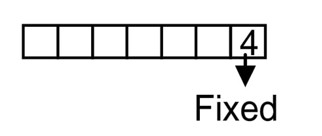44. In a class of 60 students, 30 opted for NCC, 32 opted for NSS and 24 opted fo rboth NCC and NSS. If one of these students is selected at random, find the probability that
(i) The student opted for NCC or NSS.
(ii) The student has opted neither NCC nor NSS.
(iii) The student has opted NSS but not NCC.
44. In a class of 60 students, 30 opted for NCC, 32 opted for NSS and 24 opted fo rboth NCC and NSS. If one of these students is selected at random, find the probability that
(i) The student opted for NCC or NSS.
(ii) The student has opted neither NCC nor NSS.
(iii) The student has opted NSS but not NCC.
-
1 Answer
-
44. Given that, total number of student, n (S) = 60
Let A: student opted for NCC
n (A) = 30
B: student opted for NSS
n (B) = 32
And student who opted both NCC and NSS, n (A∩B) = 24
(i) Probability that student opted for NCC or NSS,
P (A∪B) = P (A) + P (B) – P (A∩B)
(ii) Probability that student opted neither NCC or NSS
P (not A and not B) = P (A'∩B') = P (A∪B)' = 1 – P (A∪B)
(iii) Probabilities that student opted NSS but not NCC
P (B but not A) = P (B) – P (A∩B)
Similar Questions for you
3, 4, 5, 5
In remaining six places you have to arrange
3, 4, 5,5
So no. of ways
Total no. of seven digits nos. =
Hence Req. prob.

f (x) = x? – 4x + 1 = 0
f' (x) = 4x³ – 4
= 4 (x–1) (x²+1+x)
=> Two solution
Let z be equal to (x + iy)
(x + iy) + (x – iy) = (x + iy)2 (i + 1)
Equating the real & in eg part.
(i) & (ii)
4xy = -2x Þ x = 0 or y =
(for x = 0, y = 0)
For y =
x2
x =
=
of
=
When
gives c = 1
So
sum of all solutions =
Hence k = 42
Each element of ordered pair (i, j) is either present in A or in B.
So, A + B = Sum of all elements of all ordered pairs {i, j} for and
= 20 (1 + 2 + 3 + … + 10) = 1100
Taking an Exam? Selecting a College?
Get authentic answers from experts, students and alumni that you won't find anywhere else
Sign Up on ShikshaOn Shiksha, get access to
- 65k Colleges
- 1.2k Exams
- 679k Reviews
- 1800k Answers
